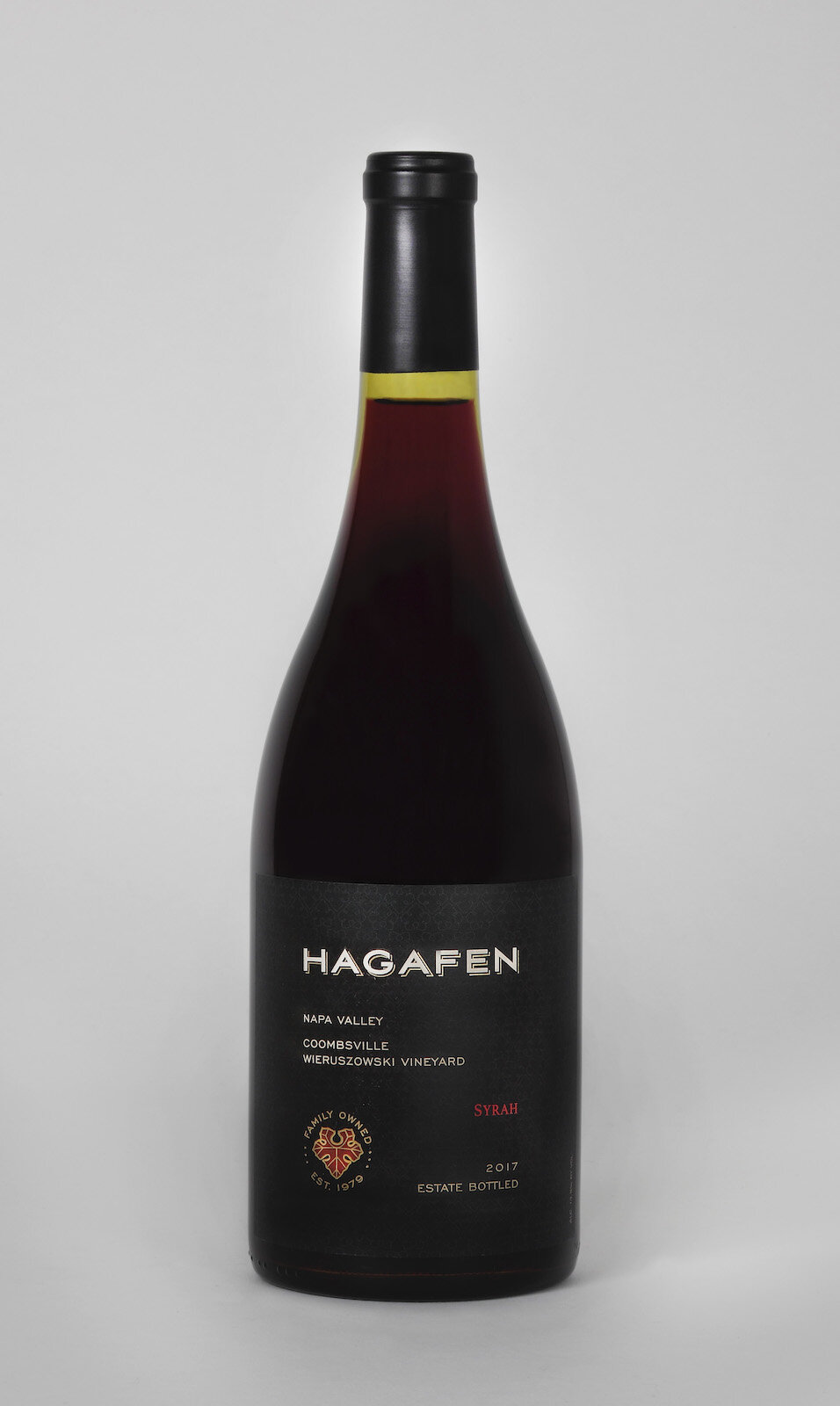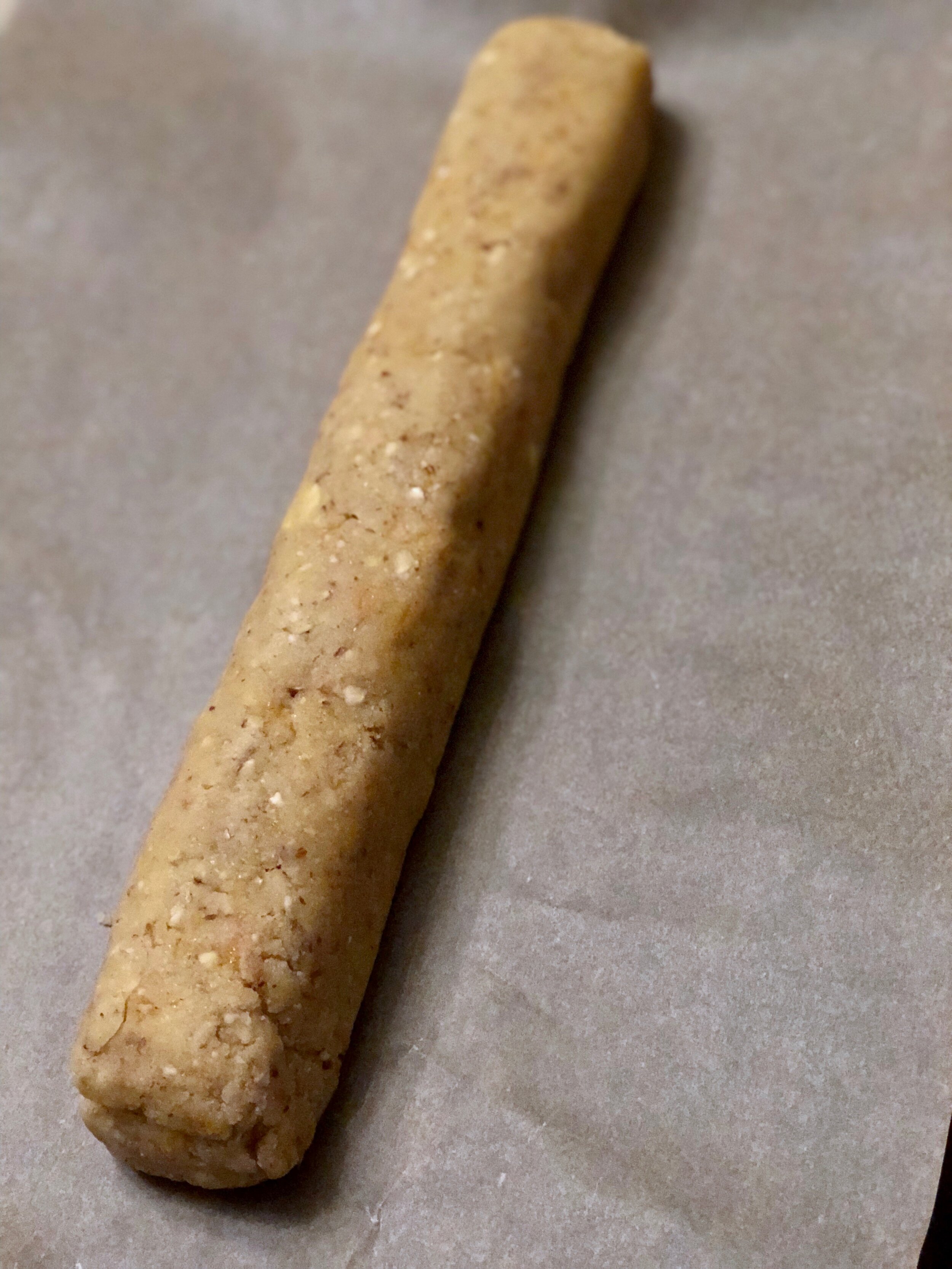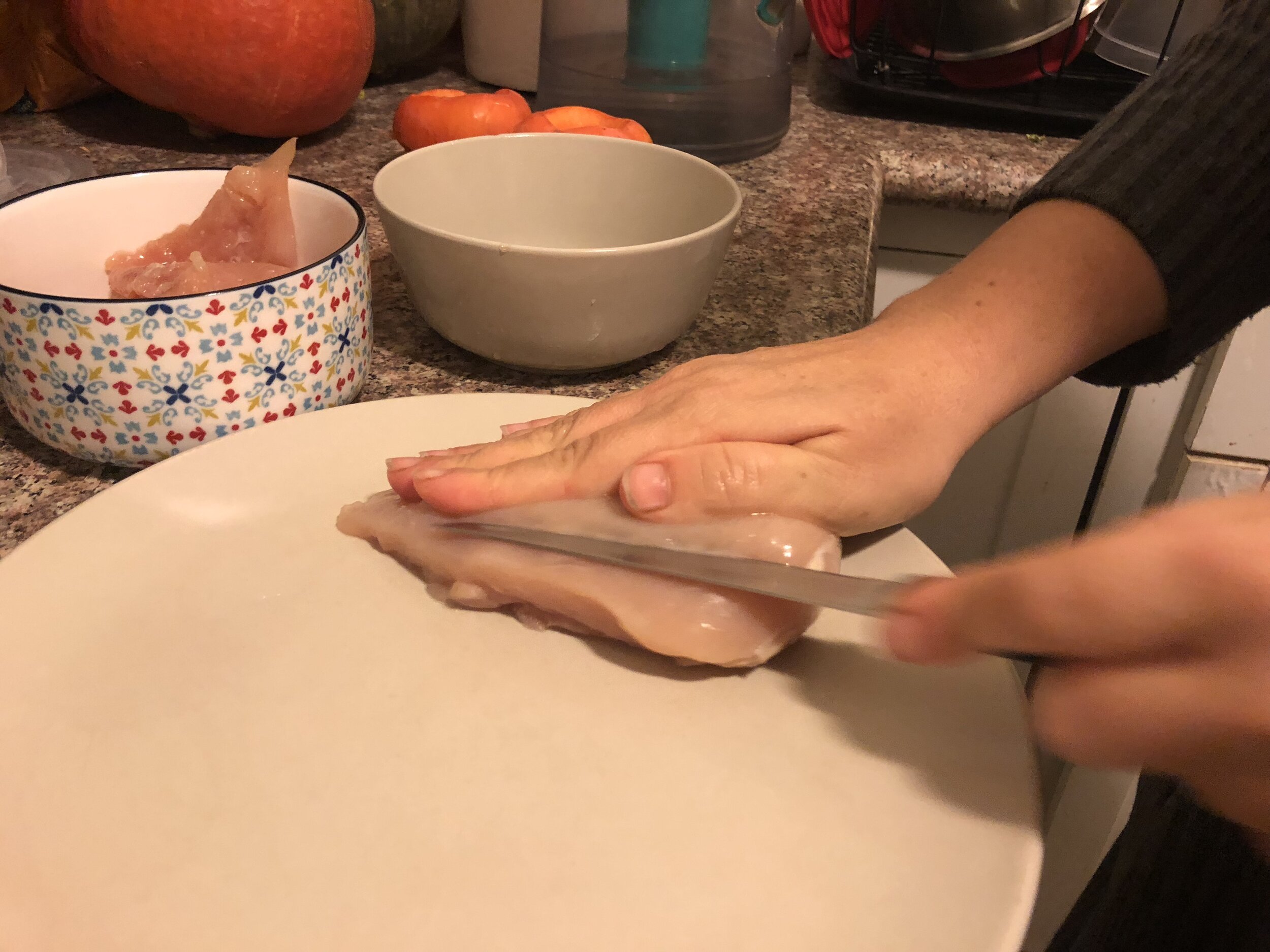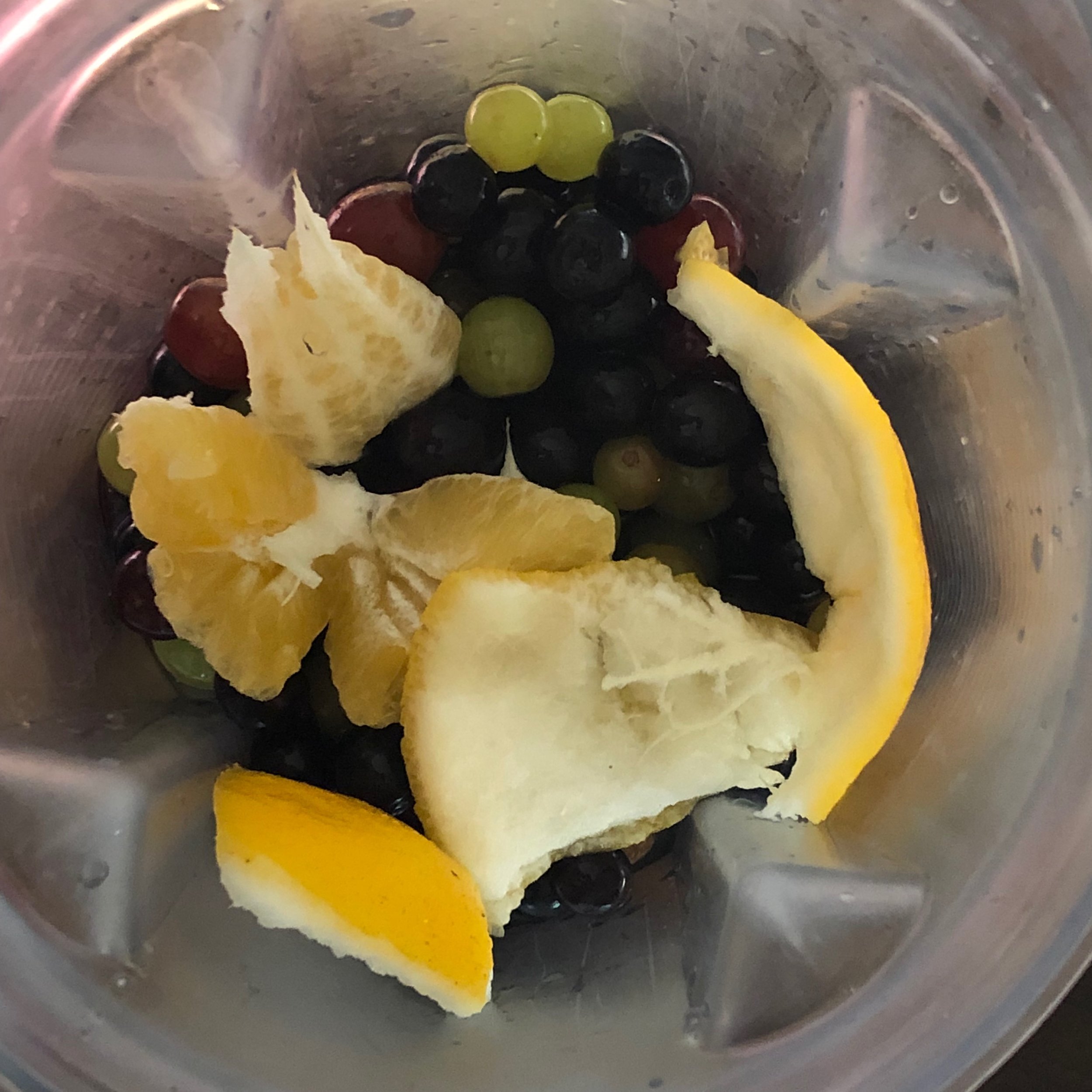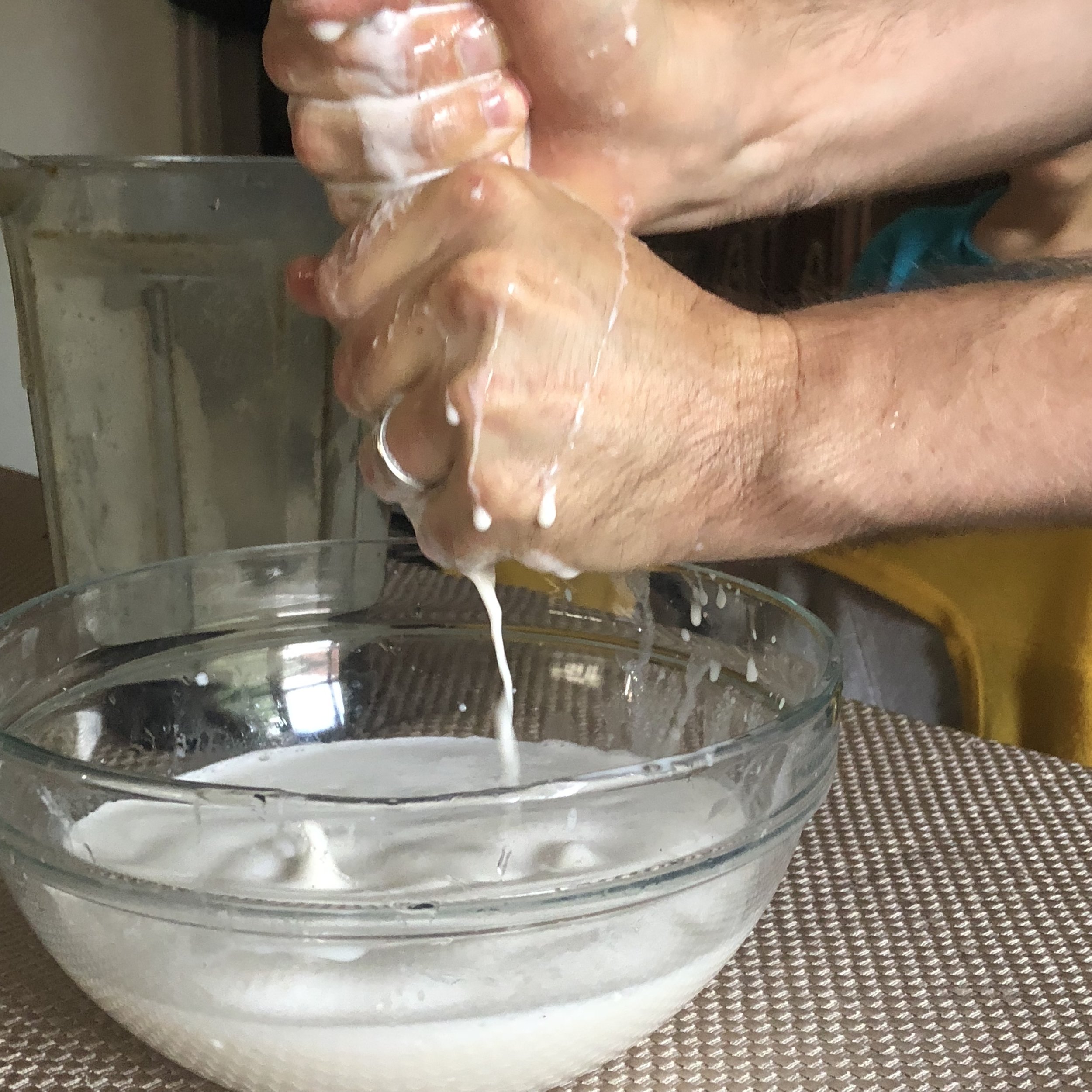Healthy "Better-For-You" Kosher For Passover Wines
/Cabernet Sauvignon vines from the Hagafen Estate located on the Silverado Trail in Napa, California
“Wine gladdens the heart of Man”
Wine plays an important role in Jewish communal life. It is consumed during pivotal moments, including on Shabbat, at brisses, weddings, sheva brachot and siyums – and of course at Passover seders.
Most people grew up thinking of kosher wine as a functional beverage, a drink to fulfill a religious need. What is not so well known is that, in the past two decades, kosher wines have reached a pinnacle of quality at attractive price points, winning many awards in the mainstream wine circuit. The offerings have even expanded into more health-conscious domains like organic and vegan.
In Search Of “Better-For-You” Kosher Wine
I attended the Kosher Food and Wine Expo in Hollywood in February. My initial goal was to find sulfite-free wines. Based on conversations I had at the Wine Expo, I interviewed three winemakers: Ernie Weir, owner of Hagafen Wine Cellars in Napa Valley; David Cohen, sales and marketing director of Elvi Wines in Spain (and son of the founders); and Joe Hurliman, head winemaker for Herzog Wine Cellars in Oxnard. I also toured the Golan Heights Winery in Israel last summer, gaining valuable insights.
From these conversations, I came away with a level of learning and understanding around the kosher wine industry that I never anticipated. I am sharing the findings with you so that you can make an informed decision when you choose your wines for Passover and beyond. You might be surprised to know that there are already many better-for-you wines on the market. And more are coming to market each year!
Elvi Wines at the kosher food and wine expo, february 2020
What Is The Problem With Sulfites?
Passover is my favorite Jewish holiday. There’s something so powerful about the structure of the seder, how we re-enact the Exodus from Egypt and the symbolic foods that we consume. Most dramatically, we drink the four cups of wine, symbolic of freedom and royalty.
Unfortunately, wine is a double-edged sword for me and many others.
Wines contain sulfites, which are a common allergen. For instance, I am very sensitive to sulfites. As such, I cannot manage four cups of wine without experiencing potentially serious side effects.
The obvious substitution is grape juice. But this doesn’t make the situation much better: The conventional Kedem Grape Juice contains sulfites and 33g of sugar per cup! The Kedem Organic grape juice, with no added sulfites, helps somewhat. However, the sugar load in four cups of grape juice is enormous: a whopping 140g!
cabernet sauvignon vines from the hagafen estate, napa, california
What Is The Function Of Sulfites?
I’ve always wondered why sulfites were used in the winemaking process. Could the winemakers just substitute another chemical – or skip them entirely?
According to Ernie Weir of Hagafen Cellars, “Sulfites get used in different stages of the winemaking process for different purposes. Early in the winemaking process, sulfites are used for antibacterial and sanitation purposes (i.e. cleaning the tank). Later in the process, they are used as antioxidants to stabilize the wine and for longer shelf life.”
Can Wines Be Produced With No Sulfites?
Elvi Wines are all low-sulfite by themselves. “Every single wine in the world has sulfites,” says Cohen. “Especially if you want to export it. Wine sold locally may not require added sulfites. But a wine that has to be exported and is meant to last will need at least a minimum amount of added sulfites. We don’t add sulfites. The minimum amount, we'll do.”
Hagafen concurs that “you cannot make wine that will have a shelf life without the use of sulfites. That is part of the issue of our organic wines, particularly the organic red wines. It's hard – or not even possible – to make them in a way that you can age them. And organic white wines, you should consume young. Not age them either. They might be fine for a couple of years, but you can't really age them.”
the Elvi wines estate in riojas, spain
With Sulfites, Is There A Difference Between White And Red Wines?
White wines don’t need as many sulfites because their shelf life is shorter anyway. The red needs more sulfites because they are higher in anthocyanins and phenols, which have a greater oxidation potential.
"Acidity makes a difference too," adds Weir. White wines, which have a low pH, do not need as many sulfites. “But at higher pH, which is usually red wines, you have to use quite a bit more. And if you don't, then it will oxidize.”
The acidity also brings out other flavors in the wine.
“With our Herenzas Riojas (a dry red wine from Spain, made from Tempranillo grapes),” explains Cohen, "we use Graciano grapes to make a blend to bring up the acidity and have the wine balanced out instead of adding chemicals” such as tartaric acid.
It’s like squeezing a lemon onto a dinner entrée: the acidity brings out the flavors of the other main dish.
After years of experimentation, winemakers have become more judicious in their use of sulfites to achieve the desired effect. These winemakers, in particular, are more careful about the sulfites that they add.
What Are Some Low-Sulfite Options?
Or Haganuz elima, a low-sulfite wine from israel.
Interestingly, the first wine that I encountered when I attended the Wine Expo was the Elima by Or Haganuz. This is a low-sulfite wine made from a blend of 75% Cabernet Sauvignon and 25% Cabernet Franc. It has no added sulfites and is aged for 14 months.
Elvi Wines has an entire line of low-sulfite wines. This applies to their entire line, which includes Clos Mesorah (Blend of 40% Carignan, 30% Grenache, 30% Syrah) and Herenzas Riojas (100% Tempranillo).
Hagafen’s entire line uses less than half the sulfites that owner Weir used 40 years ago. According to Weir, “it’s already been proven that you could use less without impacting the quality, so it would be fine.”
What about Herzog Wine Cellars, which has been at the forefront of sustainability for many years? Joe Hurliman of Herzog says, “At the moment, Herzog does not carry any low-sulfite wines. This is in the works for 2019 wine.”
Not all winemakers are yet on board with making low-sulfite wines. But these winemakers are proof that the industry is moving in that direction.
Elvi Wines Estate, Riojas,Sspain
Besides Sulfites, What Other Additives Are Used In The Winemaking Process?
Kosher wines are often clarified (i.e. cleared of suspended particles) with albumin from egg whites.
Wait, what? Isn’t wine just grapes and sulfites?
There are a number of animal-based additives used in the traditional process of clarifying and fining a non-kosher wine. However, once a wine is certified kosher, the only animal-based clarifying and fining process allowed is albumin. This may affect people with egg allergies. It also precludes the wine from being vegan.
Can wines be produced without egg whites? Can a wine truly be vegan?
Wine Is Grapes. So Why Does It Need To Be Vegan?
Some wines are now certified vegan. But wine is made out of grapes.
Why Would A Wine Require A Vegan Certification?
Certain types of wines, particularly white wines, require a process called fining. This step filters out substances in the wine that “may cause a wine to look hazy or affect its aroma, color or bitterness.” The process removes unwanted substances such as tannins, phenolics and polysaccharides.
Winemakers often include animal-based additives, such as casein, gelatin and isinglass, to clarify and fine the wine. Casein is derived from dairy, gelatin from an animal and isinglass from a non-kosher fish. These unlisted additives can cause serious problems for vegetarians, vegans and allergy sufferers. Luckily, kosher wines cannot use these, so kosher winemakers clarify their wines with albumin from egg whites.
Vegan Alternatives To Albumin
Some wineries are foregoing the albumin in favor of vegan sources. Says Cohen of Elvi Wines, “Once you are kosher, the only aspect that normally cannot be vegan is when egg whites are used for clarifying the wine. We use a mineral called bentonite. We try to use physical processes” rather than chemical.
Bentonite, derived from volcanic ash, is becoming more common for white wines. Since it is vegan, people with egg allergies, or those who completely avoid animal-based ingredients, can drink these wines.
“Bentonite gives us protein stability, which is important in white wine,” says Weir, “so they're not hazy or cloudy.”
Hagafen and Elvi are vegan because they use bentonite. Or Haganuz’s Elima wine is vegan as well and has a certification on the label. If you are looking for a longer list of vegan options, here are some others.
Are There Pesticides In My Wine?
Kosher wines are not typically made from organic grapes or sustainable sources. For many people, this is of no concern. But a growing number of kosher consumers are clamoring for wines made from organic grapes.
Why Is This The Case?
Conventionally-grown grapes are among the most heavily sprayed crops, with synthetic pesticides, fungicides and insecticides being used on the vines. Pesticide residue also shows up in the finished wines, some with detectable concentrations that persisted through the winemaking process. These even include traces of glyphosate.
Which brands use organic or sustainable sources? What methods do they use? In addition to not having conventional pesticides, what other advantages are there to wines made from organically-grown grapes?
Herzog Wine Cellars Vineyards, Clarksburg, California
Hagafen and Elvi both produce wines made from organic grapes. Herzog makes wine from grapes grown under the Lodi Rules sustainability certification. In practical terms, there is a lot of cross-over between the two modalities. However, the “sustainability” label is perceived to be more quantifiable by the growers, while “organic” is more understood by consumers.
How Does Hagafen Cellars Grow Its Grapes?
Hagafen is located in Napa Valley. Its two vineyards are certified by the CCOF (California Certified Organic Farmers) in Santa Cruz. This seal certifies the production of organic farm products in the state of California and beyond. You’ve likely seen this label on bagged fresh fruits and vegetables at your local supermarket. On these fields, Weir grows Cabernet Sauvignon, Cabernet Franc, Syrah and Riesling grapes.
Although Weir makes a very strong attempt, not all of his wines include strictly organic grapes.
Weir says, “We also purchase grapes, sustainably-farmed, from other people. We attempt to purchase [certified] organic grapes, but we're not always able to.”
Organic Cabernet Sauvignon grapes, Hagafen Estate on the Silverado Trail, Napa, California
How Does Elvi Wines Grow Its Grapes?
Elvi Wines is located in the famed Rioja region of Spain. The grapes used by Elvi are all grown organically, with organic/ecologic certification from the CCPAE.
Since Elvi does not use synthetic pesticides on its vines, how does it ensure that pests do not destroy the crop?
“When we refer to organic in the field, we don't use pesticides at all,” says Cohen. “We only use copper and sulfur for treating the wines. These two things are preventive. So to prevent disease, we always have to be on top of the vine.”
There are competitive advantages to growing your own grapes as well.
“Most wineries, especially in Israel, don't own their vines. They go to the market and buy the grapes. So they are at the whim of the grapes themselves.”
This is something of which Weir, of Hagafen, is well aware, which is why he only buys sustainably-grown grapes from other growers when the need arises.
What Are The Other Benefits Of Organic-Grown Grapes?
Perhaps the biggest benefit to these growing methods is that they are not an agricultural monoculture. For instance, Hagafen farms olives, eggs and chickens, among other crops. These are grown just for their local region, but it ensures that they are part of a greater ecosystem, rather than a monoculture (i.e. growing just one crop).
How Long Does It Take To Gain The Organic Label?
Elvi Wines, Clos Mesorah 2016
Becoming organic-certified is a daunting process.
According to David Cohen of Elvi Wines, “there is a five-year screening and supervision process” before a vintner is allowed to carry a label on the bottle. Therefore, consumers will not begin seeing organic-labeled Elvi wines until next year.
Cohen adds, “The vintage 2017, or possibly 2018, I believe from Clos Mesorah, will have the organic label. The ones that are marketed right now from 2016 do not have it because they were produced within the [5-year] screening process.”
Hagafen’s wines already carry the certification, although they do not display a label on the bottles.
Does Organic Also Apply To The Winemaking Process?
When the grapes are being fermented into wine, is there an additional stringency for organic that applies to the winemaking process as well?
“Organic is defined by how you treat the fields and the grapes. The kosher process starts once you crush the grape. Kosher is the only certification in the world that certifies what happens inside the winery.”
Are There Downsides To Producing And Selling Wines With Organic-Certified Grapes?
“Much like the story used to be for kosher,” says Weir, “where the perception was not of high quality years ago” – think sweet kiddish wines like Manischewitz and Kedem – “that is, for some people, the perception when you indicate that it's organic or vegan.”
I imagine that, as the average consumer becomes educated into the meaning of terms like vegan, organic and sustainable, this perception issue will disappear.
Cabernet Sauvignon, from the Hagafen Estate located on the Silverado Trail
What Is Sustainable Viticulture?
In the 21st century, there is a very strong movement within the popular culture to be sustainable.
Sustainable agriculture is defined by the USDA Farm Bill as one that, over the long term, enhances environmental quality and the resource base upon which the agricultural economy depends; satisfies human food and fiber needs; is economically viable; and enhances the quality of life for farmers and society as a whole.
Grape growers and winemakers, like farmers in general, subscribe to sustainability programs to ensure that they are being proper stewards of the land and the surrounding ecosystem.
Why Does Sustainability Matter?
Wine has two ingredients that appear on the label: grapes and sulfites. Unlike most processed foods or beverages, there are no other ingredients listed on the bottles: no additives, fillers, natural flavors or additional preservatives. Of course, there are other factors at play that you may not have considered. These factors include the aforementioned sulfites, albumin and bentonite used in making the wines. They also include pesticides used on the grapes, type of soil, pH level and chemical runoff from nearby vineyards, to name a few. There may also be damage to local bee populations, polluting of fish in nearby streams and rivers and collateral contamination of surrounding fields.
As with conventionally-grown agriculture, conventionally-produced kosher winemakers do not typically take these factors into consideration. But for an increasing number of people in our culture, sustainability and quality stewardship of the vine-growing environment may be an important determining factor in their consumption of wine.
Luckily, a growing number of producers do place importance and investment in these factors: there are kosher wines on the market now that are formulated to be low in sulfites, vegan, sourced from organic grapes and grown on sustainable vineyards.
Herzog Wine Cellars is a pioneer in sustainability. Joe Hurliman, Head Winemaker at Herzog, explains that in 2005, Herzog became the first winemaker in the country (kosher or otherwise) to join the Lodi Rules certification program for sustainable wine growing.
Grapes grown by Herzog Wine Cellars
What Is Lodi Rules?
Lodi Rules is a sustainable wine growing program for grape growers. It “promotes sustainable management of the entire vineyard ecosystem”. This includes careful management of the soil and water, biological pest management and minimization of potential risks to animals, water and people. It also encompasses a pesticide risk model that aims to quantify the environmental and human impact of all pesticides applied in a vineyard.
According to the Lodi Rules standards, “sustainable viticulture is applying the principles and practices of sustainable agriculture in the vineyard.”
“The Lodi Rules and sustainability goals are very holistic,” says Hurliman. “They're actually looking at how they can better manage the property as good stewards of both your land and the neighbors surrounding you.”
With the Lodi Rules, the grower has to ensure that they are not producing dust or eroding their soil by having water leave the property and going onto their neighbor’s property, even if it's runoff from rain.
There’s even an aspect of protecting the wildlife on your property, which translates into management of the ecosystem.
Hurliman explains, “You get extra points for having owl boxes for the owls to live in. They can then come out and consume the gophers and other animals that are damaging your vineyard.”
And it’s not just about taking a resource and using it better. It encompasses “making the smallest footprint possible, because we’re giving the animals, the owls, the birds, a place to live. And you're protecting that,” according to Hurliman.
Ultimately, the goal is to expand the fields under the Lodi Rules certification.
“Herzog owns about 400 acres worth of vineyards. And as redevelopment occurs in Clarksburg, in the Sacramento Delta, we are putting that land into Lodi rules.”
As of the time of this writing, these are the Herzog wines that use grapes grown under the Lodi Rules: The Red Zinfandel is bottled under these rules and has a certification label on the bottle. The Herzog Chardonnay and Alexander Valley Cabernet Sauvignon are certified but do not carry a certification label.
Vineyards owned by Herzog Wine Cellars in Clarksburg, California
Are There Other Lodi Rules Regions Outside California?
Sustainable kosher winemaking is not just found in California. Outside the United States, Golan Heights Winery in Israel is the first international winery to procure the Lodi Rules accreditation for sustainable and ecological wine growing. Starting in 2008, they embarked upon research and development of high-precision agriculture in their vineyards. One of the winery’s stated goals is to “positively benefit the environment and society.” The Golan Heights Winery operates the largest organic vineyard in Israel and has been Lodi Rules certified since 2017. They make the Yarden, Gamla, Hermon and Golan brands.
What Are Other Sustainable Certifications In Wine Growing?
Like anything else, sustainability can have great meaning or it can be just another marketing term. So the certifications must have credibility behind them.
Just as Lodi (located south of Sacramento) has the Lodi Rules, there are other procedures that are acknowledged by other wine growing regions.
Ernie Weir of Hagafen adds, “Napa has a process called Napa Green. And we are certified Napa Green. Both the winery and the land are certified Napa Green. And that's a compliance with verification agency like the CCOF, which requires periodic monitoring and verification of your procedures to ensure that you're complying with the rules.”
How Does Napa Green Differ From Lodi Rules?
Where Lodi Rules just covers growers and their vineyards, Napa Green applies to both vineyards and wineries in the Napa Valley.
“Napa Green is a comprehensive sustainability certification program for vineyards and wineries in the Napa Valley. ‘Soil-to-bottle’ stewardship includes protecting and restoring the Napa River watershed; saving energy and water; reducing waste and carbon footprint; and being conscientious employers and good neighbors.”
Beyond Napa Green: Becoming Better Stewards Of The Fish And The Bees
There are other agencies that work in concert with the wineries in Napa on behalf of the fish and the bees.
According to Weir, “we are part of an agency called Fish Friendly Farming, that has to do with how we farm in a way to mitigate runoff into streams and to encourage beneficial insects and animals to live in harmony with our agricultural practices. And, as a member of Bee Friendly Farmers, we strive to lessen any negative effects to local beehives.”
I was fascinated to learn about the various certifications and standards by which these wineries abide. Prior to researching this piece, I didn't even know that these certifications existed for wine, kosher or otherwise. In addition, relatively few consumers, kosher or otherwise, are aware of these practices when they are buying the wines.
Vineyard owned by Hagafen Cellars
What Is The Difference Between Organic And Sustainable?
Organic seals are valued by consumers when they represent food products. In the mind of the consumer, they stand for environmentally-concerned farmers. However, with grape growers and winemakers, sustainability is about growers seeking to address environmental and health concerns. For instance, the organic CCOF standard determines which pesticides and herbicides may be used by the growers, in addition to looking at soil, cultivation and water quality. But the Lodi Rules emphasizes all aspects of the farm ecosystem, from a holistic point of view, to ensure a vineyard’s continued productivity.
In practical terms, though, it comes down to the availability of the product to the consumer; the ease at which the consumer can make an informed choice; and the quality and perceived value of the product.
With wine, “we have a high-value crop, where people have the incentive to do these things,” says Weir. “It’s good for the environment and it's good for business, so to speak, too. Let's be honest about it.”
The Important Question: Which Wines Should You Buy?
The following brands all carry “better-for-you” wines. There are certainly others, but these are the brands that I’ve communicated with, researched or visited:
Elvi Wines from Spain are made with organically-grown grapes. The wines have low levels of naturally-occurring sulfites – and no added sulfites. This applies to their entire line, which includes Clos Mesorah and Herenzas Riojas.
Herzog Wine Cellars carries the Lodi Rules certification for sustainability. The Red Zinfandel is bottled under these rules and has a certification label. The Herzog Chardonnay and Alexander Valley Cabernet Sauvignon are certified but do not carry a certification label.
Hagafen Cellars is certified by CCOF as a grower of organic grapes, Napa Green for sustainability and carbon footprint, Bee Friendly Farmers to mitigate negative effects on local beehives and Fish-Friendly Farming to stave runoff into streams. (See their sustainability page for a summary.) The four wines whose grapes are CCOF certified are Cabernet Sauvignon, Cabernet Franc, Syrah and Riesling. Please note that the wines themselves do not carry an organic certification label.
Golan Heights Winery follows the Lodi Rules certification for sustainability. It is the first winery outside of California to carry this certification. As of April 6, 2020, wines with the Lodi Rules accreditation mark on the bottles include the Yarden Chardonnay Odem Organic Vineyard 2018 and Yarden Katzrin Chardonnay 2018.
Or Haganuz makes a wine called Elima that has no added sulfites and is certified vegan-friendly. Elima contains a small amount of naturally-occurring sulfites.
These wines are not only better for you, but also better for the vineyards, their workers and the entire ecology of the winemaking process. In Los Angeles, these wines are available at Glatt Mart and Cambridge Farms. They are also available online at kosherwine.com. In New York, they can be found all over the place.
As a consumer, purchasing these wines supports the winemakers who have taken the business risk to be better stewards of the land and their neighbors’ land, the health of their workers and the lives of the plants and animals that inhabit those lands.
May you all have a chag kasher v’sameach!




















